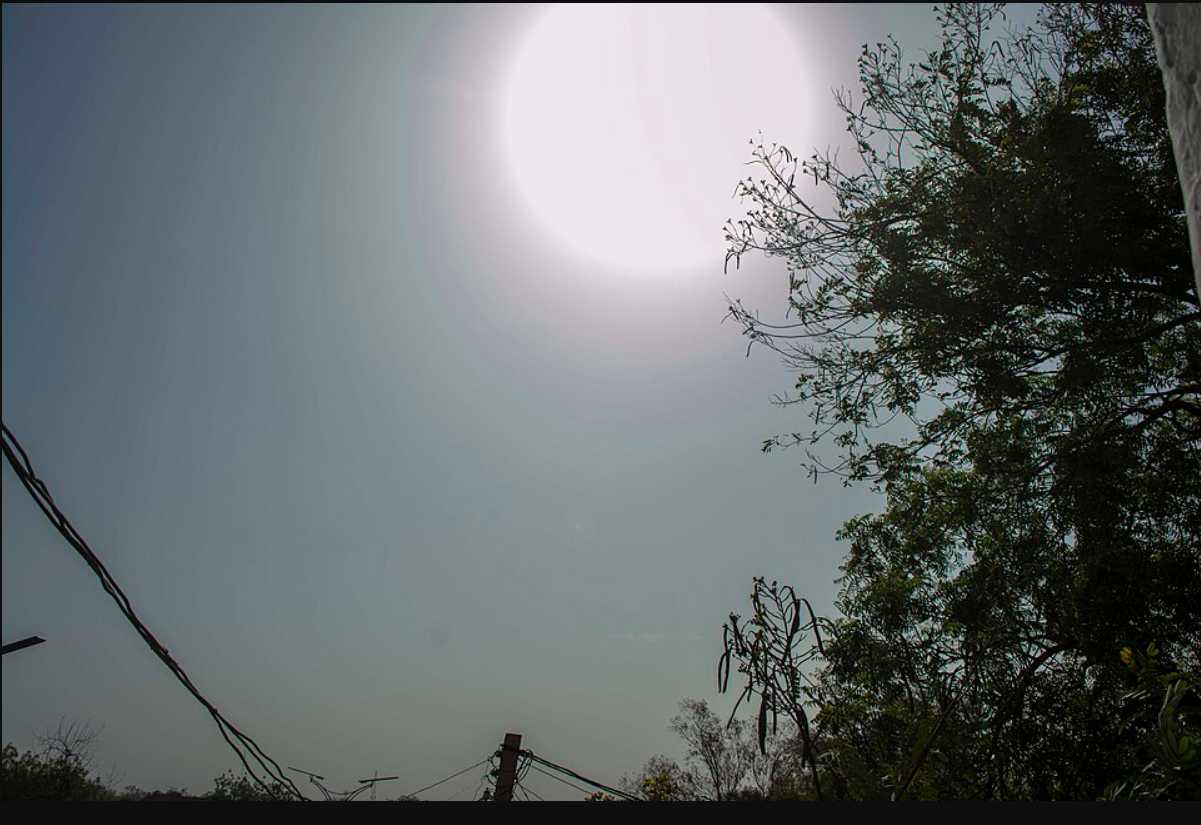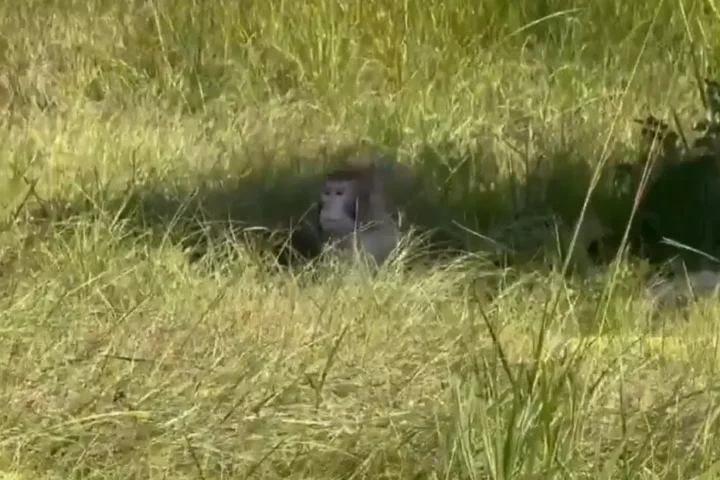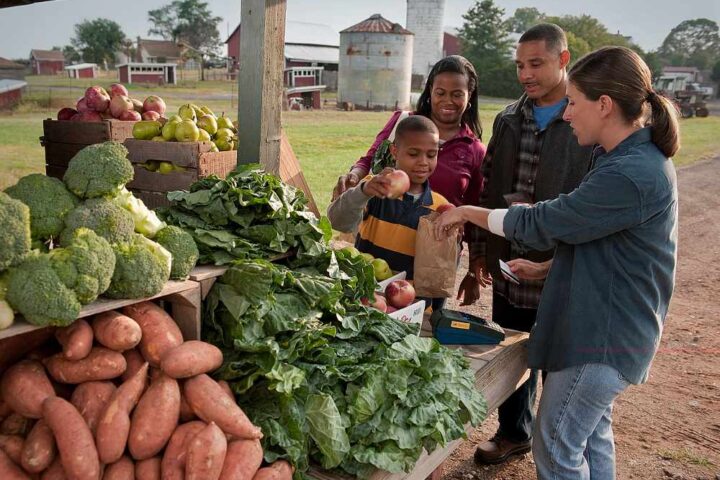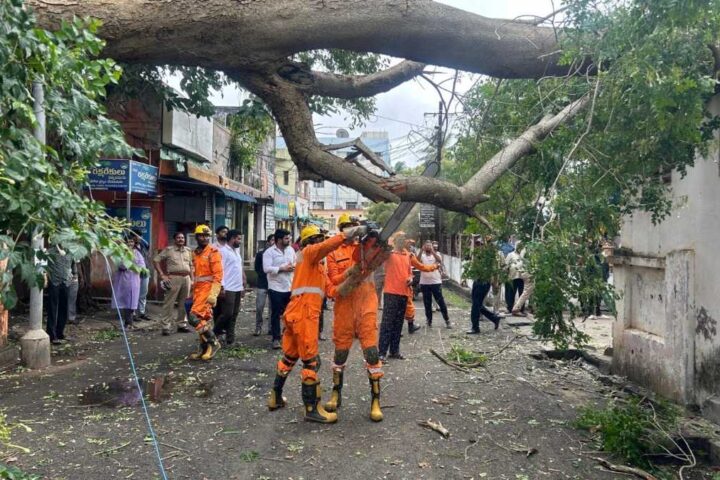A powerful heat dome has settled over the Midwest, bringing the first major heat wave of summer to Iowa with potentially life-threatening conditions. Heat index values are expected to reach 105-110°F across the state through Sunday evening, with little overnight relief as temperatures only drop to the mid-to-upper 70s.
The National Weather Service has issued a combination of Extreme Heat Warnings, Heat Advisories, and Extreme Heat Watches across the entire state of Iowa from Friday through Sunday. This marks a critical moment as communities prepare for conditions that can quickly become deadly.
The Science Behind the Heat Dome
A heat dome — a heat-trapping lid of strong high pressure in the atmosphere — will expand eastward after forming Friday and intensify through next week. This atmospheric phenomenon creates conditions where it’s expected to lead to hundreds of record-breaking temperatures, tropical levels of humidity and abundant sunshine — a combination that can be dangerous, elevating the risk for heat stress and making it challenging for people to cool off.
“This is our first big summer heat wave of the season,” said Alexis Jimenez, a meteorologist with the National Weather Service in Des Moines. “We’re going to see temperatures start to climb into the upper 90s starting on Friday and then working through Saturday and Sunday and then the evening part of Monday. The hottest temperatures are going to be Saturday and Sunday.”
Record Territory: Temperature Patterns
Temperature records may tumble in Denver, where it’s forecast to reach 100 degrees, as well as in Nebraska, South Dakota and Iowa. The timing amplifies the danger since heat-related mortality risk early in the heat season is even greater for those who are more vulnerable to the impacts of heat, such as young children, older adults, pregnant people, or those with chronic medical conditions that make them more susceptible to heat-related illness.
Daily record high for June 21 in Des Moines: 103 in 1988 and daily record high for June 22 in Des Moines: 98 in 1988. Current forecasts show highs in the mid-90s through Monday, with heat index values well into the triple digits.
Understanding Heat Index vs. Air Temperature
The distinction between air temperature and heat index becomes crucial during this event. Heat Index Values: Ranging from 100°F to 110°F, while actual air temperatures reach the mid-90s to around 100°F. The heat index combines temperature and humidity to show how hot it actually feels to the human body.
Overnight Conditions: Temperatures at night will only drop to the mid- to upper-70s, offering minimal relief. This lack of nighttime cooling prevents the body from recovering from daytime heat stress.
Health Risks: When Heat Becomes Dangerous
Heat stroke is the most serious heat-related illness. It occurs when the body can no longer control its temperature: the body’s temperature rises rapidly, the sweating mechanism fails, and the body is unable to cool down. When heat stroke occurs, the body temperature can rise to 106°F or higher within 10 to 15 minutes.
Symptoms: Throbbing headache; confusion; slurred speech; nausea; dizziness; body temperature above 103°F; hot, red, dry or damp skin; rapid and strong pulse; fainting; loss of consciousness. Heat stroke is a severe medical emergency. Delay can be fatal.
Heat exhaustion is the body’s response to an excessive loss of water and salt, usually through excessive sweating. Symptoms include heavy sweating, cold, pale and clammy skin, nausea or vomiting, muscle cramps, headache or fainting.
“By the time you start getting all those cramps and the vomiting, real bad headaches… you’re behind the eight ball,” she said. “You need to be finding air conditioning right away and really pushing the fluids.” said Dr. Booke Johnson, an emergency doctor at UnityPoint Health.
Most Vulnerable Populations
If you are pregnant, are a child or teen with asthma, or have a heart condition or other chronic health conditions, heat can make your health worse. Individuals who are very young or very old are especially vulnerable according to medical experts.
Some medications increase the risk of heat-related illness. These include diuretic medicines (sometimes called “water pills”), antihistamine medicines (including many allergy medicines), and many antipsychotic medicines used to treat a variety of psychiatric and neurologic illnesses.
Workers face particular challenges. Heat cramps usually affect workers who sweat a lot during strenuous activity. This sweating depletes the body’s salt and moisture levels. Low salt levels in muscles cause painful cramps.
Critical Community Resources: Cooling Centers
In response to the forecast, the Polk County Emergency Management Agency announced that it will be activating its extreme temperature plan starting Friday morning, June 20, and remaining in place through at least Sunday night. The plan triggers free DART bus service to cooling centers and public access to facilities like libraries, senior centers and malls for relief from the heat.
Polk County announced Friday it would also open an overnight cooling center at Polk County River Place (2309 Euclid Ave.) from 5 p.m. to 7:30 a.m. Saturday night into Sunday, and Sunday night into Monday.
Free transportation to/from daytime cooling centers will be available during extreme heat incidents. Riders need to inform the driver they are going to or from a cooling center. This removes transportation barriers for people seeking relief.
The Animal Rescue League Main Location (5452 NE 22nd St DSM/ 515-262-9503) welcomes residents who want to cool off with their pets, providing relief for pet owners who cannot leave animals at home.
Agricultural Stress During Critical Growing Season
Iowa State University Extension’s Regional Crop Update (June 9–16) reported accelerated corn canopy closure under recent heat, but warned that sustained daytime highs >95°F during pollination can reduce kernel set and yield potential. This timing threatens Iowa’s corn crop during a critical reproductive phase.
For livestock producers, livestock require unrestricted access to shade and clean water; water intake can double when heat index >100°F. Electrolyte supplements for dairy cattle to maintain milk production become necessary as animals struggle with heat stress.
Sports and Recreation Safety Modifications
Central Iowa Sports has reduced time limits for games at its “Summer Sizzler” baseball tournament to protect athletes from heat-related illness. Youth sports organizations across Iowa implement similar precautions during extreme heat events.
Per OSHA‘s “Overview: Working in Outdoor and Indoor Heat Environments,” 50–70% of outdoor heat fatalities occur within the first days of exposure as bodies acclimatize. This makes the timing of Iowa’s first major heat wave particularly dangerous.
Essential Safety Measures
Stay in an air-conditioned indoor location as much as you can. Drink plenty of fluids even if you don’t feel thirsty. Schedule outdoor activities carefully. Wear loose, lightweight, light-colored clothing and sunscreen. Pace yourself. Take cool showers or baths to cool down.
Use fans, but only if indoor temperatures are less than 90°F. In temperatures above 90°F, a fan can increase body temperature. This counterintuitive fact catches many people off guard during extreme heat.
Hydration strategies require attention to timing and content. Drink water and have a snack or a drink that replaces carbohydrates and electrolytes (such as sports drinks) every 15 to 20 minutes during any outdoor activities.
Never leave children or pets in cars. Vehicle temperatures can reach lethal levels within minutes, even with windows cracked.
UV Protection During Peak Heat
The CDC’s Sun Safety guidance states that when the UV Index reaches 3 or above—common during heat waves—skin protection is critical. Apply broad‑spectrum SPF 30+ sunscreen every two hours. Wear wide‑brimmed hats, sunglasses, and long‑sleeved, lightweight fabrics. Schedule outdoor tasks before 10 a.m. or after 4 p.m.
Healthcare System Preparedness
“If it’s someone who really is to the point of needing IV fluids, then they most often come to the emergency rooms,” she said according to Doctor Brooke Johnson with UnityPoint Health. Emergency departments prepare for increased heat-related visits during extreme weather events.
Symptoms could become more dangerous if you don’t take the proper precautions. Johnson explained that signs that are stroke-like such as confusion warrant emergency treatment. Recognition of escalating symptoms can save lives.
Similar Posts
Weather Pattern Evolution
Some Iowans woke up Friday morning to severe thunderstorms before the heat intensified. Weather forecasts indicate possible thunderstorms Monday evening, which could provide some relief from the dangerous heat pattern.
This heat wave is expected to peak over the weekend, but temperatures may remain dangerously high into early next week. The persistence of the heat dome means multiple days of stress on human health and infrastructure.
National Context and Heat Wave Scope
For a week or longer, it’s expected to lead to hundreds of record-breaking temperatures, tropical levels of humidity and abundant sunshine across multiple states. Extreme humidity will stretch from the Gulf Coast to western Minnesota, creating a massive zone of dangerous conditions.
Hot and humid conditions will expand eastward into the Upper Midwest on Saturday, with widespread major risks for heat-related impacts from Oklahoma and Arkansas to Minnesota, Wisconsin and Michigan.
Public Health Emergency Response
Extreme Heat Warnings are rare and are only issued when the combination of high temperatures and humidity reaches a life-threatening threshold. The widespread nature of current warnings across Iowa reflects the severity of this weather pattern.
Hot days can affect anyone. If you are pregnant, are a child or teen with asthma, or have a heart condition or other chronic health conditions, heat can make your health worse. Work with your doctor to create a Heat Action Plan.
Heat Illness Recognition and Response
First Aid: Call 911 or get the victim to a hospital immediately. Heat stroke is a severe medical emergency. Delay can be fatal. Move the victim to a cooler, preferably air-conditioned, environment. Reduce body temperature with cool clothes or baths. Use a fan if heat index temperatures are below the high 90s. A fan can make you hotter at higher temperatures. Do NOT give fluids.
Heat rash is a skin irritation caused by excessive sweating during hot, humid weather. While less serious than heat exhaustion or stroke, it indicates the body’s cooling system is under stress.
Community Resilience and Preparedness
While Polk County’s Extreme Temperature Plan is in effect, emergency shelters will be open for people to stay cool and get any care they may need. DART offers free rides to anyone trying to get to any of the locations.
Local emergency management coordinates with meteorologists to provide real-time updates. Enter your zip code on the CDC HeatRisk Dashboard for the heat risk forecast in your area and take recommended actions to protect your health.
Historical Perspective on Early Season Heat
Because of the ways climate change increases temperature and temperature variability, these early season extreme heat events may become more common. Iowa’s current situation provides insight into the changing patterns of Midwest weather.
Whenever temperatures are high, and particularly during extreme heat events in the early heat season, it is important to take precautions to protect yourself and those around you.
Energy and Infrastructure Considerations
During extreme heat events, electrical demand typically increases as cooling systems work harder. Use air conditioning or find a location that has one by dialing 2-1-1, visiting the National Center for Healthy Housing’s Cooling Centers by State page, or by contacting your local health department or emergency management agency.
The coordination between weather forecasting, public health response, and community resources demonstrates the importance of preparedness for extreme weather events that are becoming more frequent and intense.
Next Steps for Iowans
Monitor weather updates closely as conditions evolve through the weekend. Stay tuned to local weather updates and take this watch seriously—it could be upgraded to a Heat Warning if confidence in extreme temperatures increases.

Check on neighbors, especially elderly residents and those without air conditioning. Community response during heat emergencies saves lives through simple actions like wellness checks and sharing cooling resources.
The current heat wave serves as preparation for what scientists predict will become more frequent extreme weather events. Building individual and community resilience through proper planning, resource awareness, and taking protective actions helps minimize health impacts during these dangerous conditions.


















